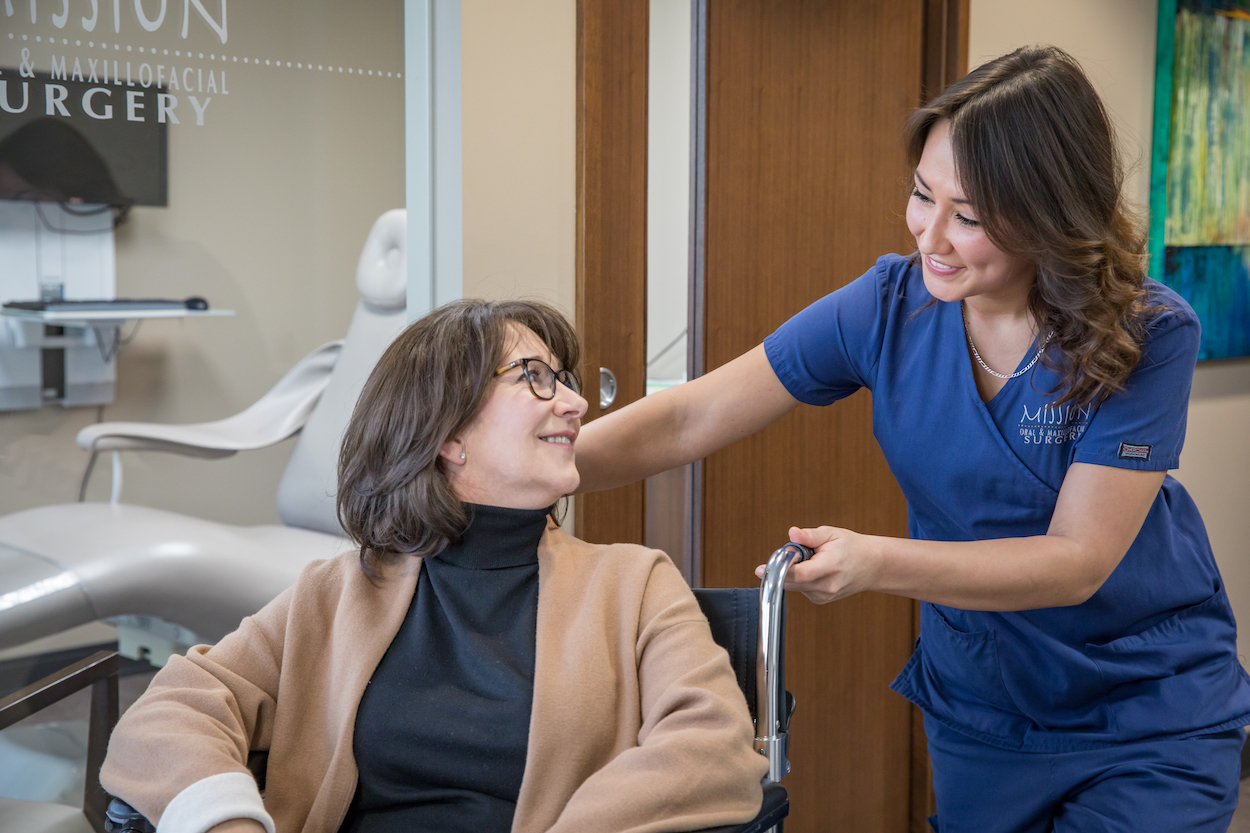Your guide to socket preservation after tooth extraction.
Protect your remaining teeth and preserving your jaw bone.
Book a consultation
*Required Field
Less fear, more comfort
A promise from Mission Oral Surgery team
At Mission Oral Surgery, we know that getting any dental procedure can be stressful, especially if you don’t understand what’s going to happen. That’s why we’ve made this guide to explain what to expect and how to best prepare to ensure your safety and comfort.
It’s our hope that after reading this guide, your concerns will be addressed, and you’ll feel confident when you come in for your procedure.
Here, you will find comfort when you need it most.
Trusted by:




Want more info or would like to meet the doctors first?
What is a socket preservation procedure?
A socket preservation is a dental procedure that is very useful after a tooth has been removed.
Benefits include:
- Healthy gums: that enable further future tooth replacement, like implants or dentures
- Keep your facial structure: loss in bone height can affect facial structure, causing sagging cheeks and jowls.
- Healthy jaw bone: greatly reduce the chances of complications like infection.
- Prevent further teeth shifting: the nearby teeth may begin to drift out of place, leading to a misaligned bite.
In order to understand why a socket preservation procedure works so well, first, you must understand that your teeth stay in place because there is a socket that allows each tooth to be anchored to your jawbone.
read more...
When a tooth is removed, the socket that was supposed to help anchor the tooth to the jaw remains empty, creating an empty space in your jaw. Now, instead of a strong, firm connection, there is a big empty space, which is susceptible to infection and disease. Empty sockets in the jaw also contribute to the degeneration of the gums and facial bones.
In order to avoid these issues, oral surgeons can fill in the space in the jaw left behind by the extricated tooth. This encourages your body to heal the area and keeps your jawbone healthy. Filling in the space is also referred to as “bone grafting” for dental implants because a nice, sturdy jaw bone is required to get dental implants later on.

Preparing for your procedure: do’s and dont’s
Your procedure will include intravenous anesthesia to make you as comfortable as possible. That means that you will be receiving medicine through a needle to make sure you don’t feel any pain.
In order to maximize your safety and comfort, we ask that you remember to:
- Not smoke, eat, or drink leading up to your procedure (for at least 12 hours)
- Arrange not to drive or operate machinery after the procedure
- Avoid wearing tight sleeves, high-heeled shoes, contact lenses, dentures, lipstick, or nail polish during the procedure
- Notify us if you need to take routine medications or if you don’t feel well
Book your appointment now
*Required Field